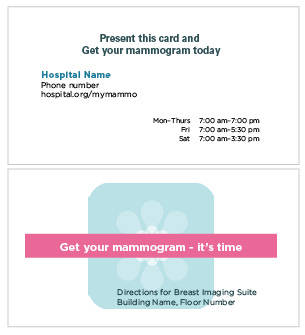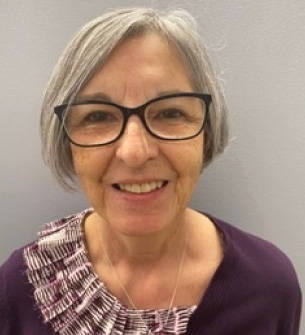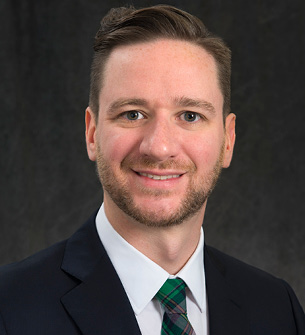A same-day mammography screening program targets underserved populations.
- At Massachusetts General Hospital, radiologists, technologists, practice development administrators, and primary care providers collaborate to increase screening mammography access for underserved populations.
- Nearly 20% of patients from participating primary care practices used the same-day screening referral program.
- Program patients were more likely to represent racial and ethnic minorities as well as Medicaid-insurance recipients.
Patients who face racial, ethnic, and economic disparities often experience barriers to screening mammography, which can result in catastrophic consequences.2 For example, patients from racial minority populations are 72% more likely to develop invasive breast cancer before the age of 50 due in part to limited access to screening.3 Recognizing this, the ACR and the Society of Breast Imaging have updated their breast cancer screening guidelines to increase awareness of the need to screen patients from underserved populations.
Radiologists, radiologic technologists (RTs), and administrators at Massachusetts General Hospital (MGH) are doing more than taking notice; they’re taking action to help patients access screening mammography. In 2015, MGH’s breast imaging team led the development and implementation of the Pink Card program, an initiative that allows eligible patients to receive mammography screening on the same day as their primary care appointments. Gary X. Wang, MD, PhD, a breast radiologist and the community health and equity officer for MGH radiology, studied the outcomes of this program. He and his co-investigators found that during the program’s first two years at the suburban Mass General Imaging center in Waltham, Massachusetts, nearly 20% of all patients from participating primary care providers who received screening did so through this program. Many of these patients were underserved minority populations from the surrounding area.
Identifying Barriers
Planning and implementing the Pink Card program was a team effort. Identifying and eliminating access barriers began when Connie Lehman, MD, PhD, joined MGH as chief of breast imaging services in 2015. She knew one of her first priorities was to develop more effective pathways to patient care, especially for underserved populations in her community. “Sometimes, due to our healthcare system complexities and our emphasis on technology, we lose sight of our patients’ unique challenges,” she says. “For example, we might describe patients who are not engaged as ‘non-compliant,’ putting the responsibility on them to take advantage of services. I wondered if, instead, we could reframe our thinking to make it easier for patients to access our care.” Gary X. Wang, MD, PhD, community health and equity officer in the radiology department at Massachusetts General Hospital (MGH) was eager to support efforts to remove screening mammography access barriers for patients. |
Inspired by this success, Lehman began to consider ways to implement something similar at MGH. She brought the idea to the MGH radiology leadership team, which included Wang, and all were immediately on board.
Wang says that accommodating patient schedules and considering all the different pathways to healthcare services is key to preventing access barriers. “We have to think about the patient journey — the steps patients have to take to access healthcare and all of the obstacles they might encounter,” Wang says. “Those from lower socioeconomic strata may be more likely to work hourly jobs, have more competing priorities, have difficulty accessing transportation, or lack childcare resources. This is in contrast to patients from higher-advantaged populations, who typically have more resources to overcome those barriers. A pro-gram like this is a critical way to decrease patient burden and prevent women from falling through cracks in the healthcare system.”
Gathering Support
Though leadership agreed that walk-in screening mammography had potential, they knew implementing the program would require coordination and creativity. Successful walk-in screening programs require collaboration and communication among many stakeholders, including radiologists, referring providers, RTs, and schedulers. “Everyone clearly saw the benefits of this program in terms of increasing access,” Wang says. “Any concerns were more rooted in making sure we were able to effectively provide the service. It is important not to overpromise and underdeliver.”To determine how to best implement the program, Lehman reached out to the MGH practice development team, which over-sees the radiology group’s non-clinical strategic goals and works closely with referring providers, schedulers, and RTs. “My team has personal relationships with 4,000 of our ordering physicians and schedulers,” says Phil Jones, director of radiology practice development. “Our group is the radiology department’s conduit to the community.”
 Connie Lehman, MD, PhD, professor of radiology at Harvard Medical School and founder of the breast imaging research center at MGH, helped spearhead the Pink Card program. |
“We felt this verbiage was important because we wanted patients to know that we aren’t on a pedestal lecturing them,” Jones says, to underscore the significance of the statement’s conversational tone. “We are members of the same medical community using the same services they are. We are with them. We are one of them.”
 Referring providers can present the Pink Card to patients during routine care visits, thereby providing immediate patient access to onsite, walk-in screening mammography services. |
Lehman says a key to the program’s success lies in considering the patient’s individual needs. “Designing a program that is tailored to a patient’s specific circumstances, meeting patient needs in a healthcare facility in which they already feel comfortable, and taking time to accommodate their individual schedules makes all the difference,” she says.
Implementing the Program
With communications materials in hand, the teams determined that they first wanted to pilot the Pink Card program where they could reach the most patients from underserved populations. Therefore, the practice development team reached out to schedulers at Mass General Imaging, a community-based outpatient facility located in the Boston suburbs.Beverly Pizzi, a breast imaging technical manager at Mass General Imaging, was immediately on board with the Pink Card pro-gram. Having lost her best friend to breast cancer, Pizzi knows how valuable early screening can be. “We need to identify these cancers early and help patients get on a pathway to care,” she says. Though she knew it would require scheduling adjustments, such as creating additional time slots to accommodate walk-ins, she wanted to help support the initiative.
Pizzi accompanied practice development team members as they visited Mass General Imaging’s referring providers in primary care practice. Similar to BIDMC, these referring providers are all located in the same building as Mass General Imaging, making a same-day referral program easily accessible. The team gave presentations that discussed the program’s desired outcomes, provided sample scripts for engaging with patients, and alleviated concerns about deliverability.
 Beverly Pizzi, breast imaging technical manager at Mass General Imaging, helped organize, implement, and track the Pink Card program at Mass General Imaging. |
Accommodating Patients
Serving walk-in patients without overburdening schedulers and RTs required coordination and innovation. Pizzi worked with Annette LaPointe, operations manager at Mass General Imaging, and radiology leadership to help the program run smoothly. Pizzi and LaPointe monitored patient flow and maintained constant communication with leadership, RTs and schedulers to ensure they could deliver the service effectively.“It is important for physician leadership to work closely with operations leadership, RTs and schedulers to really understand the opportunities and obstacles that might exist in their practices,” Wang says. “Stakeholders should have a close relationship with providers to make adjustments to accommodate provider and patient needs. For radiology to meet everyone where they are to improve access collaboratively, it requires a lot of empathy and clear communication.”
Working together helped Mass General Imaging continue to provide these referral services to patients. When a patient arrived with a Pink Card referral, the front desk would call the technical area to see if they could accommodate that patient. Most Pink Card referrals happened three days a week — when primary care physicians saw patients. By communicating with providers, the group was able to prepare for these referrals; they booked up to four slots in the schedule to accommodate walk-ins. On the rare occasion they could not accommodate the patient, they coordinated with the patient’s schedule to make a future appointment.
 Phil Jones, director of radiology practice development at MGH, coordinated efforts with referring providers to effectively implement and monitor the Pink Card program. |
Gathering Results
To track patient flow, the practice development team included a unique code on each referring physician’s Pink Cards. Pizzi maintained a spreadsheet with information that tracked the referrer as well as whether this was a first-time screening mammography visit, or if the last screening had been greater than one, two, or three years prior.From Nov. 1, 2016, to Dec. 31, 2018, 733 women participated in the Pink Card program at the Mass General Imaging breast imaging center at Waltham, representing nearly 20% of all patients who underwent screening mammography at this location. Pink Card users were more likely to represent underserved racial and ethnic demographics, accomplishing many of the program’s goals. In addition, approximately 70% of women who used the Pink Card program were not up to date on their screening mammography.4
Patient responses to the pilot program have been overwhelmingly positive. One patient raved about the program in a feedback survey, enthusiastically offering, “I was able to get my mammogram THE SAME DAY I spoke to my doctor about it. That was FANTASTIC: No return visits or figuring out when I could get back again. Thank you for this new option!!!!”
Jones attributes the program’s success to teamwork and patient-centered innovation. “It works because it forces everyone to think about the barriers for our patients,” he says. “The Pink Card program allowed us to reframe our services based on the needs of patients — maybe we are serving the mother of three who is prioritizing her children over her own healthcare. If we can accommodate that mother while she has a few minutes, it makes a lasting impact.”
Looking Ahead
During the successful Mass General Imaging pilot, MGH also rolled out the Pink Card program to other imaging centers in its group. Each center navigated different opportunities and challenges based on its unique resources and demographics. “It is important to remember that the Pink Card is a tool,” Lehman says. “It has to be catered to individual needs in order to work effectively, and this takes time and communication.”Wang agrees, adding, “There’s a lot more to something like this than just saying, ‘Here is this program, and we can make it work.’ It takes a systemwide commitment to make sure all the pieces are in place to make it sustainable and scalable. Different sites operate on local constraints, local populations, and local resources; every site has different needs, capacities, and resources.”
Unfortunately, due to the pandemic’s impact on diagnostic radiology, Mass General Imaging and the other centers had to pause the Pink Card program in spring 2020. Mass General Imaging is still navigating patient backlog but plans to restart the program as soon as possible. “Primary care providers are already calling us to ask when the program will be available again,” says Pizzi, who emphasizes the positive impact the Pink Card program has had on referring providers and their workflow.
Jones adds that the Pink Card program is more valuable now than ever. In fact, the American Cancer Society estimates that in 2022 alone, the nation will see 290,560 new invasive breast cancer cases and 43,250 breast cancer-related fatalities.5 “Programs like this are going to be even more important coming out of COVID,” Jones says. “The pandemic has broken the cycle of regular healthcare screenings with a lot of our patients, and getting them back into regular compliance is tough. The opportunity to offer them a same-day appointment is a great way to reengage with them, to show them that we are open, we care, and we want them to come back.”
End Notes
1. Myers ER, Moorman P, Gierisch JM, et al. Benefits and Harms of Breast Cancer Screening: A Systematic Review. JAMA. 2015; 314(15),1615-1634. doi: 10.1001/jama.2015.13183.
2. Ahmed AT, Welch BT, Brinjikji W, Farah WH, Henrichsen TL, Murad MH, Knudsen JM. Racial Disparities in Screening Mammography in the United States: A Systematic Review and Meta-analysis. Journal of the American College of Radiology. 2017;14(2),157-165. doi: 10.1016/j.jacr.2016.07.034.
3. Hendrick RE, Monticciolo DL, Biggs KW, Malak SF. Age distributions of breast cancer diagnosis and mortality by race and ethnicity in US women. Cancer. 2021;127(23),4384-4392. doi: 10.1002/cncr.33846.
4. Wang GX, Pizzi BT, Miles RC, Dontchos BN, LaPointe AP, Lehman CD, Narayan AK. Implementation and Utilization of a “Pink Card” Program Integrated with Physician Visits. Journal of American College of Radiolgy. 2020;17(12),1602-1608. doi: 10.1016/j.jacr.2020.07.007.
5. Siegel RL, Miller KD, Fuchs HE, Ahmedin J. Cancer statistics, 2022. CA: A Cancer Journal for Clinicians. 2022;72(1),7-33. doi: 10.3322/caac.21708.
Share Your Story
Have a case study idea you’d like to share with the radiology community? To submit your idea, please click here.
Creative Commons
Increasing Mammography Access by American College of Radiology is licensed under a Creative Commons Attribution-NonCommercial-NoDerivatives 4.0 International License. Based on a work at www.acr.org/imaging 3. Permissions beyond the scope of this license may be available at www.acr.org/Legal.
Now It's Your Turn
Follow these steps to consider innovative ways to extend mammography screening services to underserved populations, and tell us how you did at imaging3@acr.org or on Twitter with the hashtag #Imaging3:
- Collaborate with schedulers and RTs in your practice to determine whether a same-day walk-in referral program is right for your screening mammography centers.
- Consider the patient’s healthcare journey and create pathways to care that eliminate barriers for underserved patient populations.
- Connect with referring providers to determine patient and provider needs.
Author
Chelsea Krieg, Freelance Writer
Join the Discussion

#Imaging3 on Twitter
Call for Case Studies
